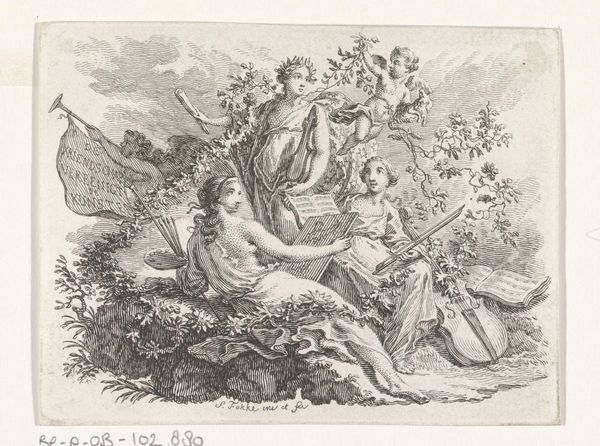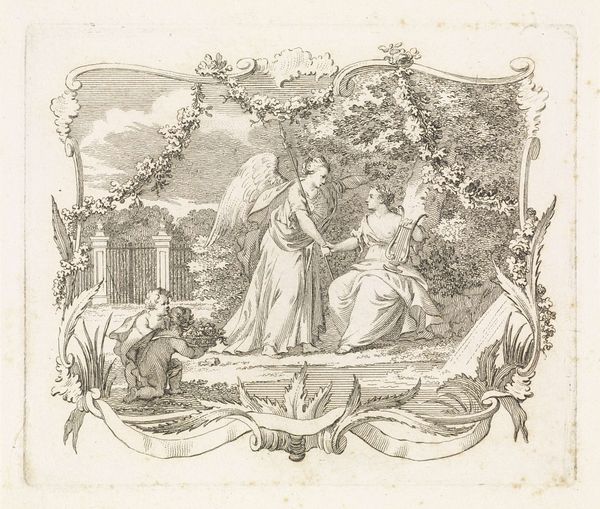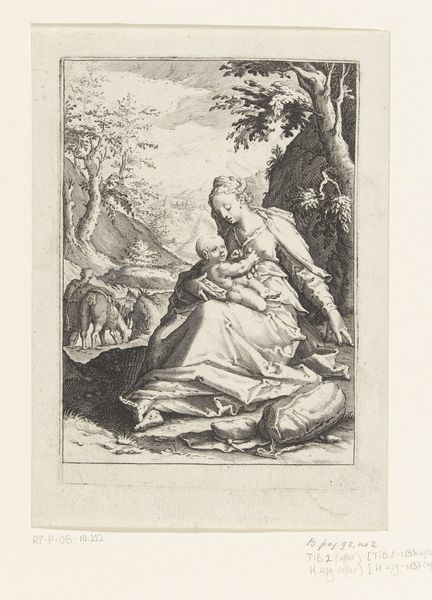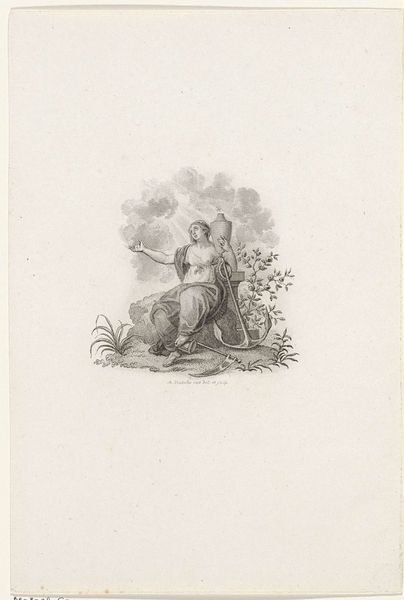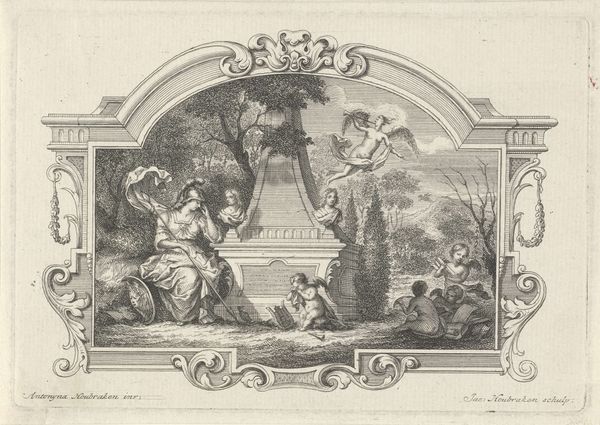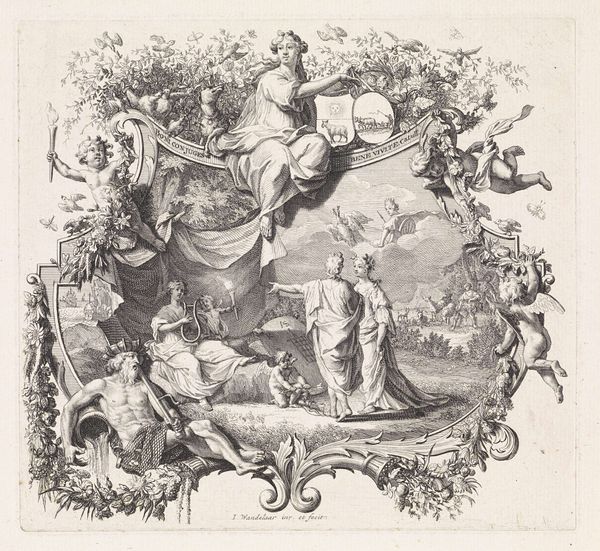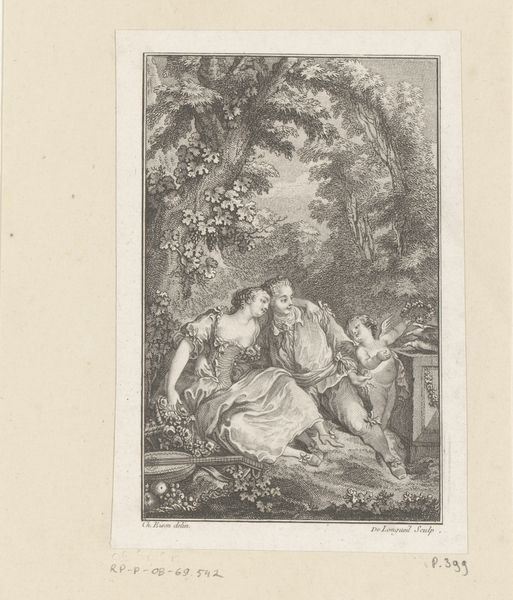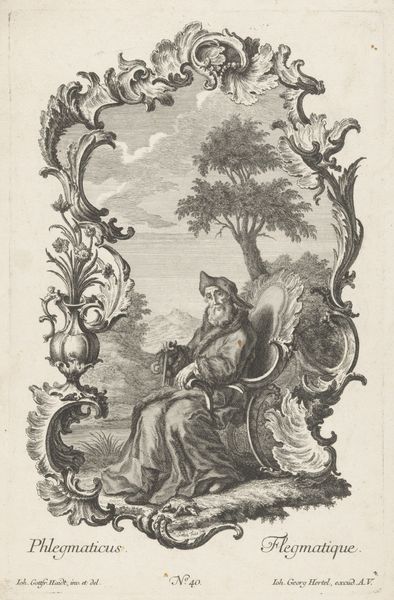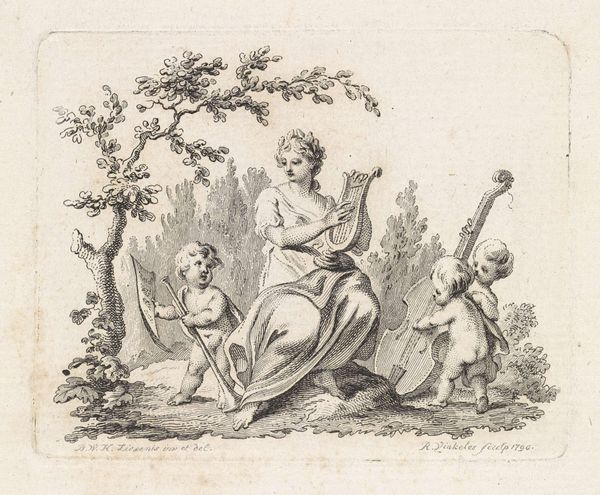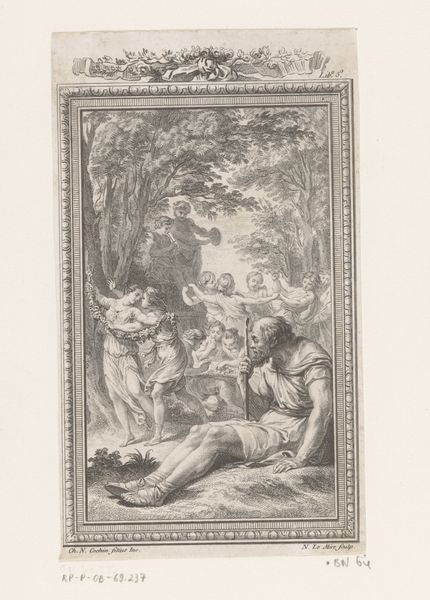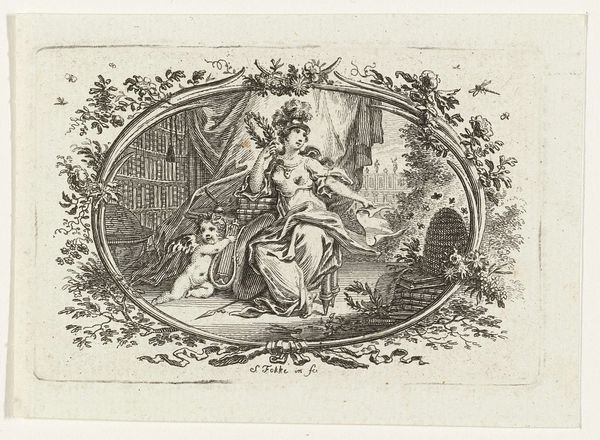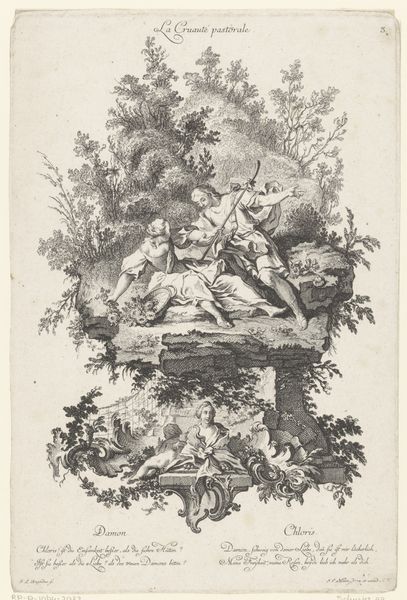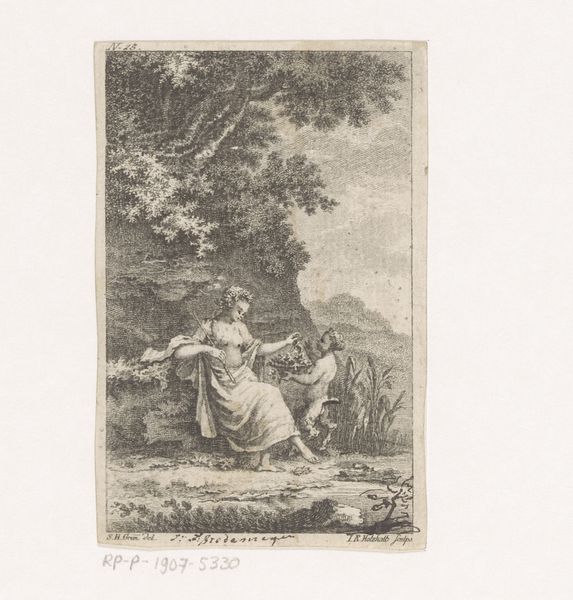
drawing, print, engraving
#
portrait
#
drawing
#
allegory
#
baroque
# print
#
figuration
#
line
#
engraving
Dimensions: height 72 mm, width 92 mm
Copyright: Rijks Museum: Open Domain
Editor: This is "Personificatie van de beoefening van de kunsten," an engraving by Simon Fokke dating back to the 18th century. I'm struck by the density of symbolism – it feels like a visual encyclopedia of the arts. What do you see in this piece? Curator: The allegory is a key element. Notice how the female figure, embodying the arts, is literally framed by nature, books, and various artistic tools. Fokke’s work encapsulates the 18th-century desire to categorize and celebrate human achievement. How do you think this celebration connects to broader societal power structures? Editor: I guess that, in glorifying these "achievements," it probably reinforced a hierarchy. The "arts" back then likely excluded voices and perspectives from marginalized communities. It is a celebration but a celebration for whom and at what expense? Curator: Precisely! And it’s critical to question who is given agency in the representation. The engraving normalizes a Eurocentric, patriarchal view of artistic genius, obscuring contributions from other cultures and genders. We need to understand whose stories are deemed important and whose are erased, or minimized. Consider the tools – who had access to them, both literally and figuratively? Editor: That makes me look at it differently now, I initially saw an educational illustration, and I hadn't even considered what that illustration silently teaches us. Curator: By critically engaging with these historical works, we can challenge the canon and make space for a more inclusive understanding of art history. So, what does that say about the role of the museum now, as it displays and interprets these artworks from the past? Editor: I now understand it as being about presenting multiple perspectives and making visible the power dynamics embedded within these seemingly straightforward depictions. This conversation reframed how I read images—from passively observing to actively questioning. Curator: And that is exactly why the conversations need to happen, artworks, and how we read and display them, need context. That is how we learn to have more intersectional and inclusive view of the past.
Comments
No comments
Be the first to comment and join the conversation on the ultimate creative platform.
